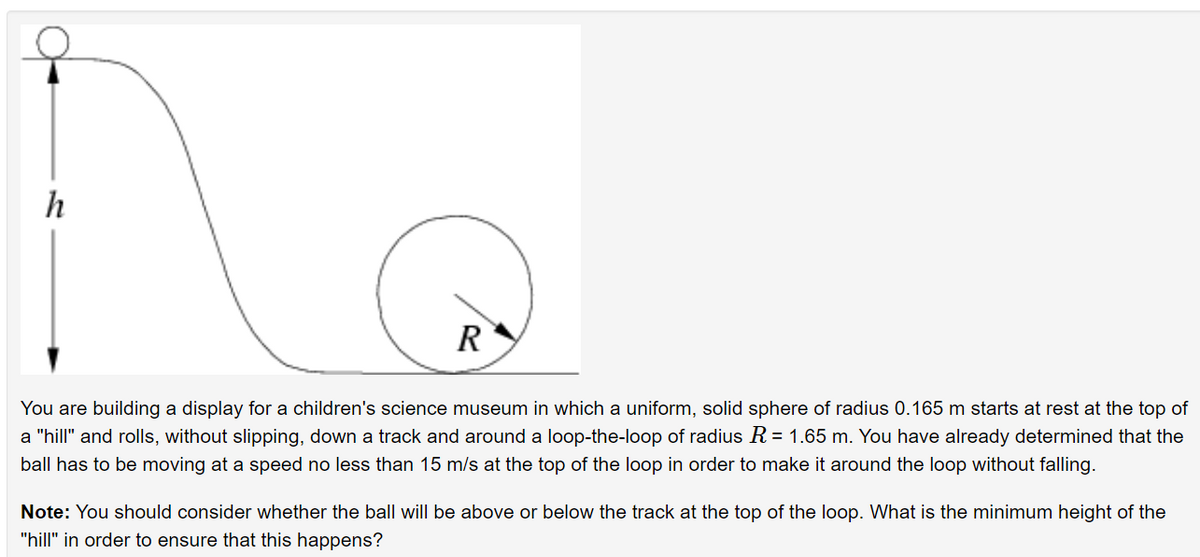h R You are building a display for a children's science museum in which a uniform, solid sphere of radius 0.165 m starts at rest at the top c a "hill" and rolls, without slipping, down a track and around a loop-the-loop of radius R = 1.65 m. You have already determined that the ball has to be moving at a speed no less than 15 m/s at the top of the loop in order to make it around the loop without falling. Note: You should consider whether the ball will be above or below the track at the top of the loop. What is the minimum height of the "hill" in order to ensure that this happens?
Rigid Body
A rigid body is an object which does not change its shape or undergo any significant deformation due to an external force or movement. Mathematically speaking, the distance between any two points inside the body doesn't change in any situation.
Rigid Body Dynamics
Rigid bodies are defined as inelastic shapes with negligible deformation, giving them an unchanging center of mass. It is also generally assumed that the mass of a rigid body is uniformly distributed. This property of rigid bodies comes in handy when we deal with concepts like momentum, angular momentum, force and torque. The study of these properties – viz., force, torque, momentum, and angular momentum – of a rigid body, is collectively known as rigid body dynamics (RBD).
I am working on this problem and I think I am pretty close but I keep getting wrong answers. How do I do this?
In this problem, I am solving for h.

Trending now
This is a popular solution!
Step by step
Solved in 2 steps with 2 images









